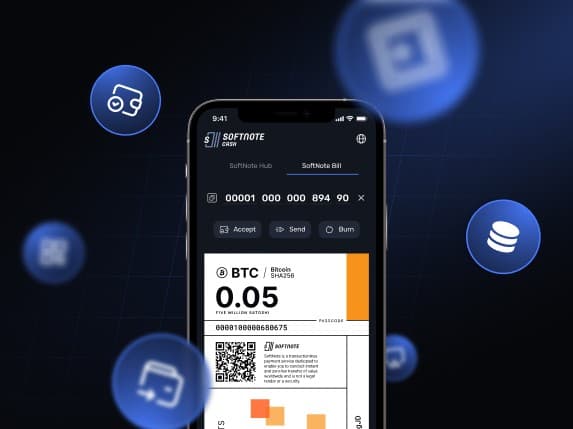This article will showcase the various methods to help you withdraw crypto into your bank account.
How to Transfer Bitcoins to a Bank Account: Step-by-Step Process

Before going into the steps for crypto withdrawal, we must outline the different ways to transfer Bitcoins to a bank account.
Here are some methods on how to transfer Bitcoins to a bank account:
- P2P transfers
- Crypto wallets off-ramp/on-ramp
- Centralized exchanges
- Bitcoin ATMs
- Bitcoin credit cards
Here is a brief overview of how each of the methods helps to send crypto to a bank account:
P2P Transfers
This process involves sending your cryptocurrency to another crypto user or merchant, who then credits your account with fiat currencies. People must factor in merchant charges and gas fees when processing this transaction. Examples of P2P transfers include: regular person-to-person swaps, Paxful, LocalBitcoins, and Remitano.
Here is how P2P works:
- Users send the required cryptocurrency quantity to the merchant
- Merchant transfers the fiat equivalent to the user’s bank account
Crypto Wallets Off-ramp/On-ramp
In this case, the funds are transferred within the platform, without\ dealing with wallet addresses. The wallet works with trusted merchants to process crypto-fiat or fiat-crypto transactions. All charges are done automatically and added to the overall costs. Examples include Coinbase Wallet, Tectum SoftNote, and MoonPay.
Here is how crypto wallets off-ramp/on-ramp work:
- Users log in to their cryptocurrency wallet
- They navigate to the off-ramp section
- In this section, users input the amount they want to withdraw
- The wallet deducts the amount from their balance
- The Fiat equivalent of the cryptocurrency is deposited into users’ bank accounts.
Crypto Credit/Debit Cards
Think of your regular credit or debit card. In this case, you fund your wallet through Bitcoin and other cryptocurrencies. Crypto credit cards are more common and easier for the platform to manage. In this case, users top up their card before using it. On the other hand, debit cards are linked to wallets and use the pay-as-you-go principle. Examples include SoftNote Pay, Venmo Credit Card, Gemini Credit Card, and Coinbase Debit Cards.
Follow these steps to use a crypto credit or debit card:
- Register on any cryptocurrency wallet with a credit or debit card
- Fund your wallet with tokens that the debit or credit card supports (not all cryptocurrencies are supported).
- Start using your crypto credit or debit card on supported online stores and Bitcoin ATMs.
Centralized Exchanges
These trading platforms offer multiple methods on how to transfer Bitcoins to a bank account. These range from P2P transfers and crypto wallet off-ramps to Bitcoin credit/debit cards. Binance, Kucoin, OKX, and Bybit are some good examples.
Here is how centralized exchanges work:
- Users create an account with the exchange
- They fund their crypto wallet using available methods
- Individuals can withdraw directly to their bank using P2P transfers or off-ramps within the exchange
- The preferred crypto withdrawal method determines the steps users must follow.
Bitcoin ATMs (BTMs)
Like their name states, these are automated machines that enable people to withdraw cash by spending Bitcoins. They operate like standard ATMs, with the only difference being that people use their crypto wallets for transactions rather than credit or debit cards. Examples of Bitcoin ATM providers include Coin Hub, Chain Bytes, General Bytes, and Bitcoin Depot.
Here is a brief rundown of how Bitcoin ATMs work:
- Locate a Bitcoin ATM near you
- Scan the QR code to send the amount of Bitcoin you want to withdraw.
- Once the transaction completes processing, the BTM will dispense the equivalent in cash to you
Choosing the Best Option to Transfer Bitcoins to a Bank Account

While showing how to send crypto to a bank account, we outlined the various crypto withdrawal methods. You must consider certain factors before choosing which option or platform to use.
Here are things to consider before deciding on the platform for your crypto withdrawal to a bank account:
- Availability: This factor precedes everything else, as it is near-impossible (if not impossible) to withdraw crypto to your bank account from a platform unavailable in your region. In most cases, you cannot access the website or app without a VPN.
- Fees: Another feature to consider is the cost of crypto withdrawal to a bank account is the cost of doing so. Users must consider the overall cost, not just how much is stated during a step of the whole process. From gas fees to merchant charges, everything is important.
- Security: Security in this case applies to user safety and the authenticity of any platform that enables people to send crypto to their bank accounts. Before trading with any merchant or off-ramp service, ensure they are certified. In addition, read third-party reviews from other people who are using or have used their services. The exchange should incorporate 2FA, KYC, and other measures to protect people’s funds.
- Speed: Cryptocurrency transactions must be efficient, and this principle applies to transferring Bitcoin to a bank account. Imagine sending Bitcoin to a merchant in seconds from your SoftNote wallet, but waiting 3–5 days for the funds to be processed.
None of these factors is more important than the other. Instead, you should aggregate them all and decide which platform meets all four best.
Tax Rules You Must Consider Before You Transfer Crypto to a Bank Account

Before cashing out crypto to a bank account, you must understand tax rules. Failing to report properly can lead to fines or audits. You can read the previous article on “Is sending crypto to another wallet taxable” for more insights.
Here’s what to keep in mind:
- Capital gains tax: Profits from selling crypto are taxed, especially when you want to withdraw your gains. Short-term gains (held under a year) are taxed higher rate than long-term gains.
- Reporting requirements: In the U.S., you must file Form 8949 with the IRS. Other countries have similar rules. It is in your best interest to understand the regulations, especially as they apply to you.
- Record-keeping: Save all transaction history, including dates, amounts, and fees paid. It must not be a complex system, as you can simply record the date and the transaction hash/ID.
- Tax tools: Use software like CoinTracker or Koinly to track gains and losses automatically. These tools are more efficient than tracking your tax returns manually.
Always check local tax laws before withdrawing. A small mistake can cost you later.
How to Transfer Bitcoins to a Bank Account Safely: Avoid These Mistakes
Withdrawing crypto to a bank account seems simple, but errors can be costly. Here are common mistakes to avoid:
- Wrong bank details: Sending crypto to an unlinked account may result in permanent loss. Double-check your bank details before confirming the transactions. You can also use platforms that confirm and store your account details for future use.
- Ignoring fees: Some exchanges charge high withdrawal fees. Compare rates to avoid losing money. In addition, also check if there are other charges you may be required to pay besides withdrawal or gas fees.
- Missing tax obligations: Forgetting to report withdrawals can trigger audits. Always track and declare profits. This point is essential for active crypto traders who are often far more susceptible to missing tax obligations.
- Using unverified platforms: Scam exchanges are more common than people think and can steal funds. Most of these fake platforms play the long game by gaining users’ trust and accumulating cryptocurrencies. After which they will rug the project by claiming they were hacked. Stick to trusted, regulated services.
A little caution ensures a smooth and secure transfer every time when transferring cryptocurrencies from your blockchain wallet to your account. Understanding the essential steps on how to transfer Bitcoin to a bank account can save your hard-earned funds from being exploited.












